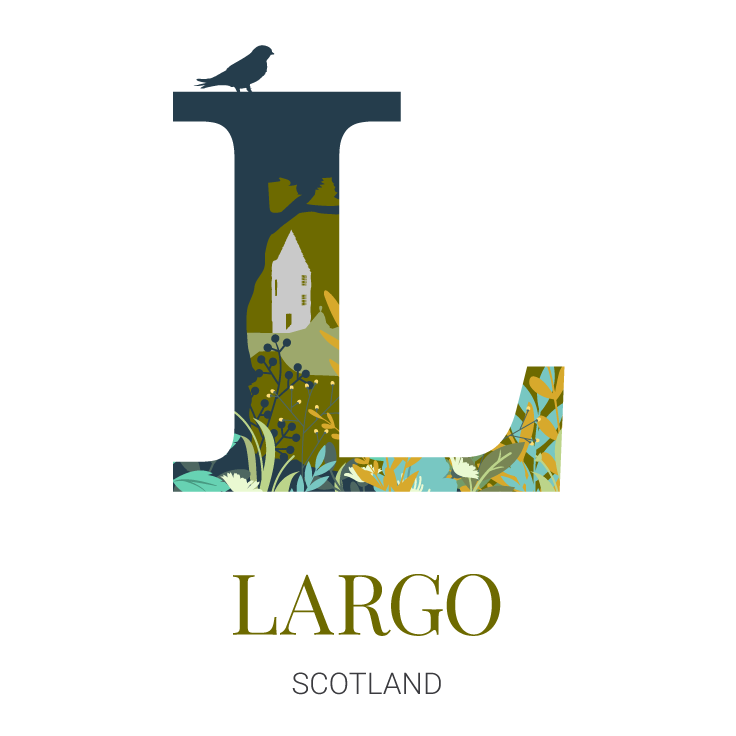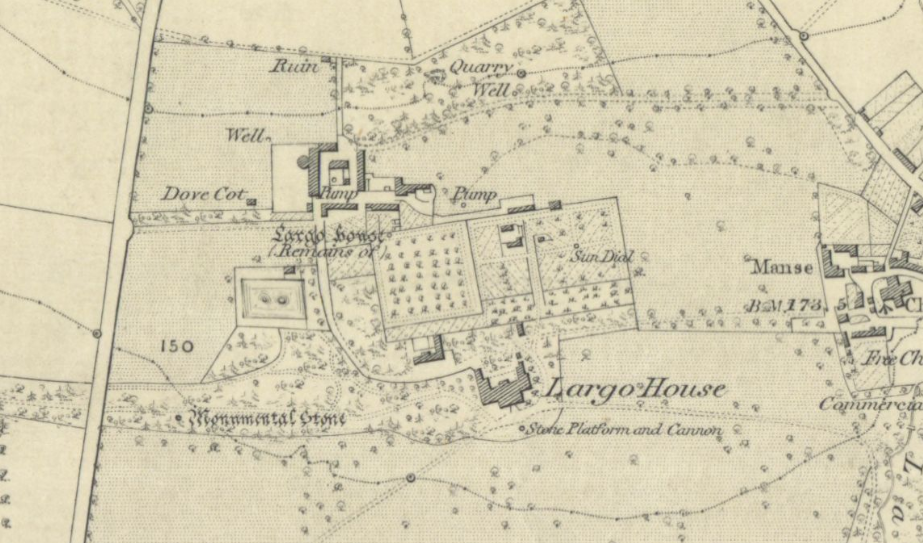
From the National Library of Scotland Archives
About Largo Estate
Largo Estate is located in Fife, ten miles from St Andrews. There have been a number of owners of Largo Estate over the centuries, with the most famous being Sir Andrew Wood, who became Lord High Admiral of Scotland. Following a series of successful naval engagements, he was granted the lands of Largo in 1490 by King James IV, and built a fortified dwelling. The Wood tower is a small part that still remains. Famously he hated travelling on dry land, and constructed a canal to take him to church in Upper Largo, the outline of which can still be seen.
The Durham family owned Largo Estate from the mid 17th Century to the mid 19th Century. The most famous members of the family, and true brothers in arms, were James, born in 1754 who served in the army for 70 years, being made a general in 1830. His younger brother Philip was born in 1763, and after a lifetime of naval service including captaining the Defiance at Trafalgar, was made an admiral in 1830.
Largo Estate is owned by the Crichton family, it was passed down to Charles Julian MM Crichton in 1901. Parts of the Largo estate have had various custodians and tenants throughout the years. Most recently the house itself was inhabited by long term tenants in the 1930’s – the Hutchison family. It was requisitioned by the War Office and occupied by the Polish Parachute regiment during and following WWII.
In the 1950’s, after irreparable damage to the house and roof, with little compensation from the War Office, no willing buyers and tax bills the owners could not afford, Douglas Crichton had no choice but to remove the roof of Largo House. He capped the stone in the hope that the roof could be reinstated in future years and this is one reason the building still stands today.
Peter Kay was the last gardener to work the land at Largo from 1950-80s and since then the walled garden has been left to pasture.There are a few remaining fruit trees growing on the South facing wall of the garden, and ‘peach screen brackets’ are still installed on the upper edge of the wall. The remaining cherry and plum trees could have been planted during Peter’s time and the same is true for a number of apple trees remaining in the walled orchard – they may even pre-date Peter’s work.
We are now entering the fourth season of reinstating Largo Estate’s historical walled garden, after being used for grazing livestock for over 40 years. In the coming months we will be working through a design and implementation process for the garden with aims to develop it into the productive and beautiful space it once would have been. Production will focus on vegetables, fruits and flowers at kitchen/market garden scale, with the introduction of livestock such as pigs, layer hens and bees in other parts of the estate land later down the line.
Our Horticulture team has begun this process in collaboration with Largo’s owners and an awareness of the local context. You can find out more about Bas and the team on ‘Our Team’ page.
Our current objectives are:
- To begin the process of re-invigorating Largo Estate.
- To produce vegetables, fruits and flowers for sale.
- To practice organic and agro-ecological methods of production.
- To attain financial sustainability within our horticulture enterprise.
- To preserve the house as much as possible and remove / control tree growth.
- To ensure that structures primarily walls (but also including trees, buildings, slates) are safe.
- To begin creating something that will be, in the long term, a beautiful place for customers to visit.
As Largo’s walled garden develops we are now looking for local volunteers to support the project. If you are interested in volunteering with us, please see the information on our ‘Recruitment’ page.
Subscribe to the Largo newsletter here


